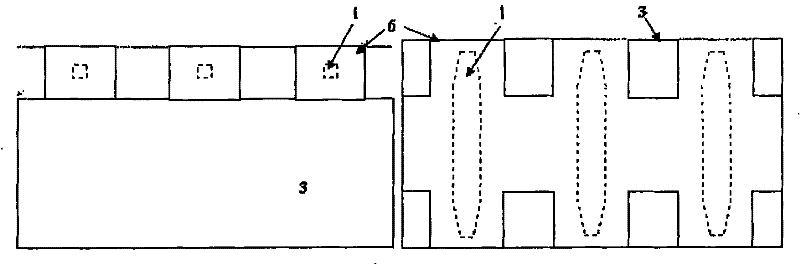Method for improving efficiency of coupling waveguide and fiber
A technology of optical fiber coupling and waveguide, which is applied in the field of improving the coupling efficiency of waveguide and optical fiber, can solve the problems of light field leakage, substrate leakage loss, leakage, etc., achieve small optical field mismatch loss, eliminate leakage loss, and improve coupling efficiency Effect
- Summary
- Abstract
- Description
- Claims
- Application Information
AI Technical Summary
Problems solved by technology
Method used
Image
Examples
Embodiment Construction
[0023] In order to make the object, technical solution and advantages of the present invention clearer, the present invention will be described in further detail below in conjunction with specific embodiments and with reference to the accompanying drawings.
[0024] Figure 1 (a) is the overall schematic diagram of the nanowire waveguide device after it is made. The nanowire waveguide is made on the SOI wafer, 1 is the silicon nanowire waveguide, made on the top silicon of the SOI wafer, and 2 is the buried layer 2 of the SOI wafer. Silicon oxide, the thickness of the silicon dioxide layer is 1 to 3 microns, 3 is the substrate silicon of the SOI wafer.
[0025] Figure 1(b) is the overall schematic diagram of silicon dioxide deposited on the surface of the device, which is deposited on the surface of the fabricated nanowire waveguide 1 by using the plasma-enhanced chemical vapor deposition PECVD process, using silane and nitrous oxide at 350 Celsius reaction to generate silicon ...
PUM
 Login to View More
Login to View More Abstract
Description
Claims
Application Information
 Login to View More
Login to View More - R&D
- Intellectual Property
- Life Sciences
- Materials
- Tech Scout
- Unparalleled Data Quality
- Higher Quality Content
- 60% Fewer Hallucinations
Browse by: Latest US Patents, China's latest patents, Technical Efficacy Thesaurus, Application Domain, Technology Topic, Popular Technical Reports.
© 2025 PatSnap. All rights reserved.Legal|Privacy policy|Modern Slavery Act Transparency Statement|Sitemap|About US| Contact US: help@patsnap.com



